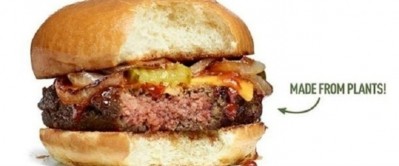Naturally Good Expo 2019
Good shelf: Why store listings are still crucial for Aussie brands to taste success in the US

Speaking at the Naturally Good Expo 2019 Business Summit in Sydney, Natural Product Consulting founder and consultant Bob Burke said Australian firms should focus on omnichannel business opportunities, but not at the expense of traditional brick and mortar listings.
“Figuring out how to sell off shelf is still the absolute most important thing, [especially for] a new brand aiming for a market as large and vast as the US,” said Burke.
Here, he advised brands to always start and solidify their category management argument before proceeding, for best results.
“Every time you sit in front of a retailer, distributor or broker, they’re going to want to know whether your product is going to grow the category, attract a new user, or offer something more innovative – have an answer for that,” he said.
“Remember that ‘selling through’ [reputable channels] is much more important than ‘selling in’ [multiple places] when it comes to natural products in the US.”
Be ready to be steady
That said, Burke cautioned companies to be careful about taking on national distribution before really being ready.
“I have seen some of the biggest misfortunes befall companies when they come to the US, see major retailers like Whole Foods get smitten with them, get very excited and go national – which means they then had to deal with all of [Whole Foods’] 11 regions and thus having to spread resources very thinly.”
“Therefore, be mindful. Someone may say you are authorized for national distribution at a certain time, but it may actually take another nine months or so before you are really [ready to be] in all of their stores.”
The distributor aspect
Identifying Walmart, Kroger and Costco as the main food retail operators in the country at 19.6% (US$190bn), 8.5% (US$83bn) and 6.6% (US$64bn) of total US industry sales respectively, he highlighted brokers and distributors tend to have good access to such retailers.
“For the natural product market, national distributors like DPI, KeHE, and United Natural Foods (UNFI) take some 70+% of the market,” said Burke.
“In terms of key retailers, some major ones [to know] are that DPI has access to Kroger, KeHe to Target and Walmart, and UNFI to Whole Foods.”
Of note for companies when talking to distributors is that the relevant buyers will tend to look at factors such as ingredients, consumer and retailer demand, pricing and promotional strategy, product uniqueness and appeal, shelf life and the sales network that exists behind the line when selecting a new item.
Planning ahead
Burke added that making a comprehensive plan –and including all the relevant players involved in its conception - was a key factor when trying to enter the US market, but that the ability to be flexible was not to be overlooked.
“Have a plan and stick to it 80% of the time, but don’t be a slave to it. Be opportunistic when warranted, and not scattershot,” he said.
“People who own the plan should be co-authors of it – so make sure to include the distributors and/or brokers who are part of your US entry strategy into its creation.”



















